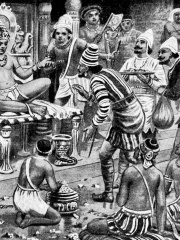
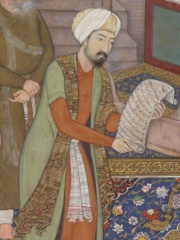
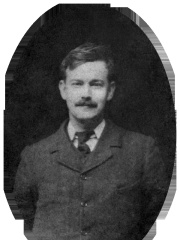
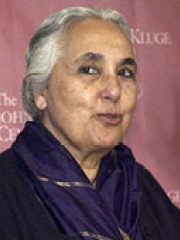
The Most Famous
HISTORIANS from India
This page contains a list of the greatest Indian Historians. The pantheon dataset contains 561 Historians, 5 of which were born in India. This makes India the birth place of the 20th most number of Historians behind Syria, and China.
Top 5
The following people are considered by Pantheon to be the most legendary Indian Historians of all time. This list of famous Indian Historians is sorted by HPI (Historical Popularity Index), a metric that aggregates information on a biography's online popularity.

1. Pulakeshin II (610 - 642)
With an HPI of 62.05, Pulakeshin II is the most famous Indian Historian. His biography has been translated into 20 different languages on wikipedia.
Pulakeshin II or Ereyamma(IAST: Pulakeśin; r. 609–642), popularly known as Immaḍi Pulakeśi, was the Chālukyan emperor from c. 609 to 642. During his reign, the Chalukya empire expanded to cover most of the Deccan region in peninsular India.as per the inscription of Shanka Basadi at Basti-Bana Pulakeśi another name was "Ereyamma". A son of the Chalukya monarch Kirttivarman I, Pulakeshin overthrew his uncle Mangalesha to gain control of the throne. He suppressed a rebellion by Appayika and Govinda, and decisively defeated the Kadambas of Banavasi in the south. The Alupas and the Gangas of Talakadu recognized his suzerainty. He consolidated the Chalukya control over the western coast by subjugating the Mauryas of Konkana. His Aihole inscription also credits him with subjugating the Latas, the Malavas, and the Gurjaras in the north. The most notable military achievement of Pulakeshin was his victory over the powerful northern emperor Harshavardhana, whose failure to conquer the Chalukyan territories to the south is attested by the Chinese pilgrim Xuanzang. In the east, Pulakeshin subjugated the rulers of Dakshina Kosala and Kalinga. After defeating the Vishnukundina monarch, he appointed his brother Vishnu-vardhana as the governor of eastern Deccan; this brother later established the independent Eastern Chalukya dynasty of Vengi. Pulakeshin also achieved some successes against the Pallavas in the south, but was ultimately defeated during an invasion by the Pallava monarch Narasimhavarman I. He patronized several Jaina scholars, including Ravikirti, who composed his Aihole inscription.

2. ʽAbd al-Qadir Badayuni (1540 - 1615)
With an HPI of 58.82, ʽAbd al-Qadir Badayuni is the 2nd most famous Indian Historian. His biography has been translated into 15 different languages.
ʽAbd al-Qadir Badayuni (21 August 1540 – 1615) was an Indian writer, historian, and translator. He lived in the Mughal Empire. He translated into Persian the Hindu works, the Ramayana and the Mahabharata (Razmnama).

3. R. H. Tawney (1880 - 1962)
With an HPI of 52.46, R. H. Tawney is the 3rd most famous Indian Historian. His biography has been translated into 18 different languages.
Richard Henry Tawney (30 November 1880 – 16 January 1962) was an English economic historian, social critic, ethical socialist, Christian socialist, and important proponent of adult education. The Oxford Companion to British History (1997) explained that Tawney made a "significant impact" in these "interrelated roles". A. L. Rowse goes further by insisting that "Tawney exercised the widest influence of any historian of his time, politically, socially and, above all, educationally".

4. Romila Thapar (b. 1931)
With an HPI of 51.27, Romila Thapar is the 4th most famous Indian Historian. Her biography has been translated into 25 different languages.
Romila Thapar (born 30 November 1931) is an Indian historian. Her principal area of study is ancient India, a field in which she is pre-eminent. Thapar is a Professor of Ancient History, Emerita, at the Jawaharlal Nehru University in Delhi. Thapar's special contribution is the use of social-historical methods to understand change in the mid-first millennium BCE in northern India. As lineage-based Indo-Aryan pastoral groups moved into the Gangetic Plain, they created rudimentary forms of caste-based states. The epics Ramayana and the Mahabharata, in her analysis, offer vignettes of how these groups and others negotiated new, more complex, forms of loyalty in which stratification, purity, and exclusion played a greater if still fluid role. The author of From Lineage to State, Asoka and the Decline of the Mauryas, Early India: From Origins to AD 1300, and the popular History of India, Part I, Thapar has received honorary doctorates from the University of Chicago, the University of Oxford, Institut National des Langues et Civilisations Orientales, Paris, the University of Edinburgh, University of Calcutta, University of Hyderabad, Brown University, and the University of Pretoria. Thapar is an Honorary Fellow of the School of Oriental and African Studies, London, where she also received her Ph.D. in 1958, and a Foreign Honorary Member of the American Academy of Arts and Sciences. In 2008, Romila Thapar shared the US Library of Congress's Kluge Prize, for Lifetime Achievement in the Humanities and Social Sciences.
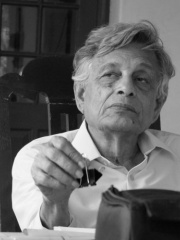
5. Irfan Habib (b. 1931)
With an HPI of 47.32, Irfan Habib is the 5th most famous Indian Historian. His biography has been translated into 18 different languages.
Irfan Habib (born 12 August 1931) is an Indian historian of ancient and medieval India, following the methodology of Marxist historiography in his contributions to economic history. He is known for his strong stance against Hindutva. He has authored a number of books, notably the Agrarian System of Mughal India, 1556–1707, an Atlas of the Mughal Empire: Political and Economic Maps with Detailed Notes, and an Atlas of Ancient Indian History (with Faiz Habib). As the general editor, he is also the driving force behind the A People's History of India series, volumes of which continue to be released.
People
Pantheon has 5 people classified as Indian historians born between 610 and 1931. Of these 5, 2 (40.00%) of them are still alive today. The most famous living Indian historians include Romila Thapar, and Irfan Habib. The most famous deceased Indian historians include Pulakeshin II, ʽAbd al-Qadir Badayuni, and R. H. Tawney.
Living Indian Historians
Go to all RankingsDeceased Indian Historians
Go to all RankingsPulakeshin II
610 - 642
HPI: 62.05
ʽAbd al-Qadir Badayuni
1540 - 1615
HPI: 58.82
R. H. Tawney
1880 - 1962
HPI: 52.46

